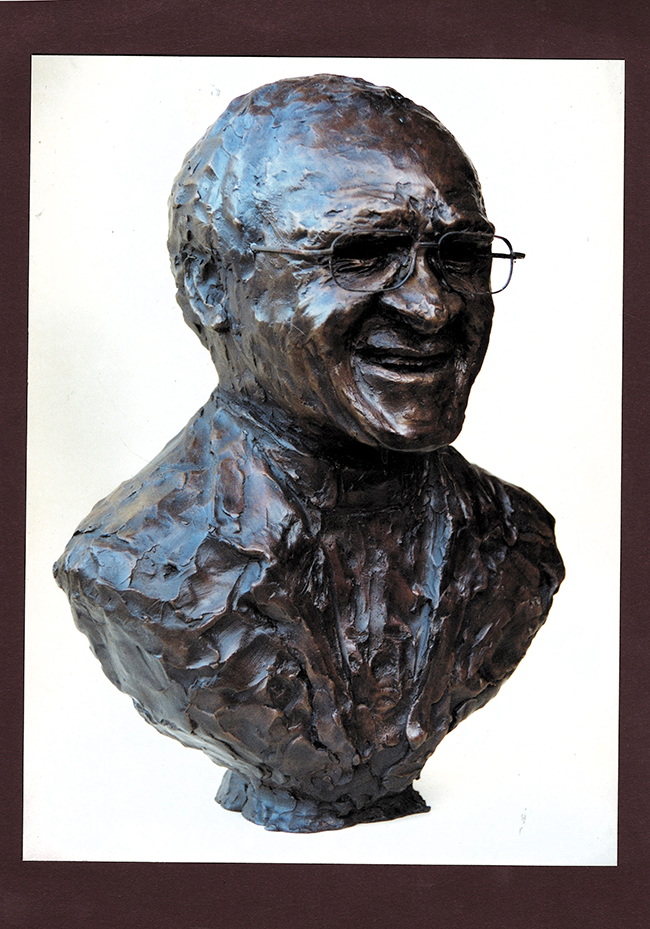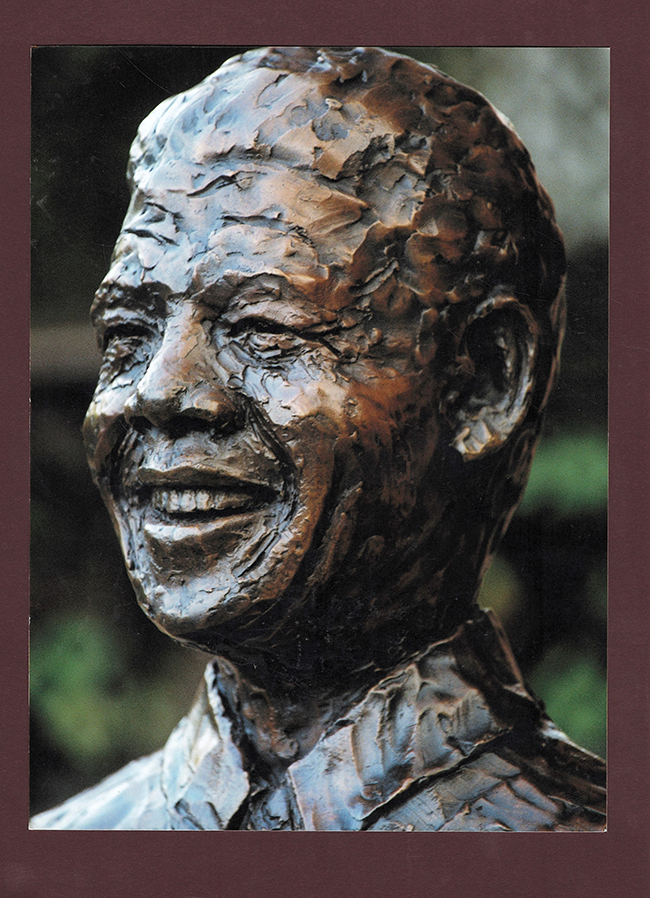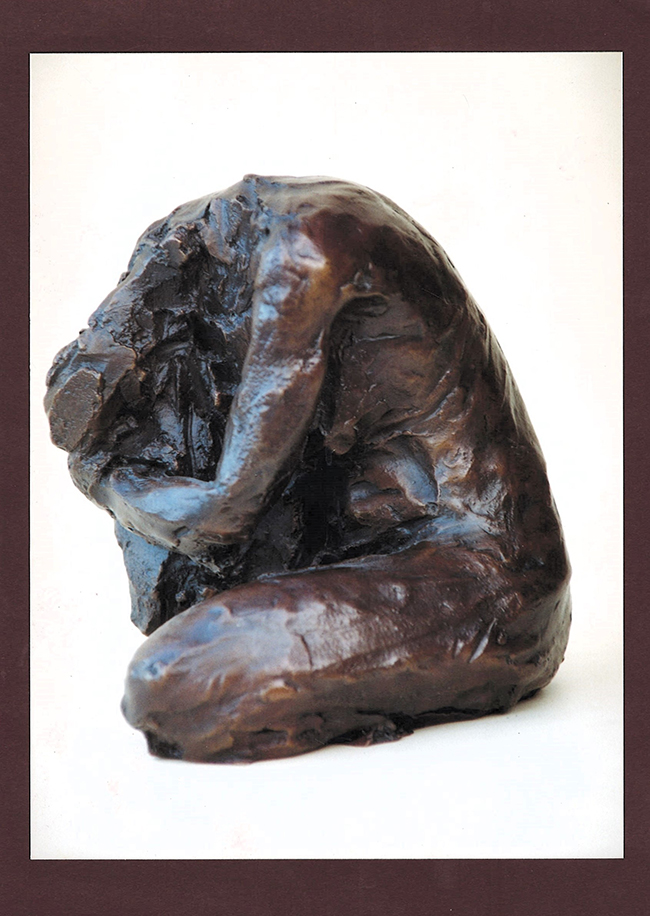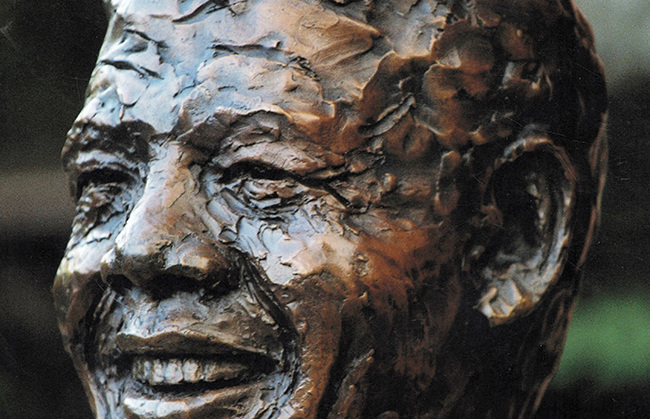John Gardner doesn’t just carve features into bronze—he draws out character. His approach to sculpture is less about documentation and more about translation: of warmth, of spirit, of small moments that outlive history books. Based in South Africa, Gardner works with speed and instinct, shaping clay not to chase likeness, but to reveal essence. He believes a great sculpture isn’t finished when it looks right—it’s finished when it feels familiar, when someone sees it and recognizes not just the face, but the person behind it. His work spans tributes to legendary figures as well as introspective forms, and in every piece, there’s a shared thread: humanity before heroism.
Desmond Tutu: A Moment Captured

The bust of Archbishop Desmond Tutu, the first in Gardner’s Legends of Africa series, began with a chuckle. Tutu looked at the piece-in-progress and smiled: “I like the nose.” Gardner, ever collaborative, asked if the lips should be fuller. That sparked a burst of laughter from Tutu—“If you do that, I will look like a real African!” Gardner took the cue, gently lifting each of Tutu’s cheeks with his hands to seal the joyful expression into clay. “It’s finished,” he said. “But you didn’t take your full five minutes,” Tutu replied. “That’s all I needed,” Gardner answered.
The result is a bust that does more than show Tutu’s face. It holds a moment of humor, energy, and generosity—qualities that defined him. The timing of the sitting added even more weight: Tutu had been preparing a eulogy for Beyers Naudé, the anti-apartheid clergyman. From laughter to solemn reflection, the day contained multitudes. So does the sculpture.
Later, the artist’s proof of the bust was auctioned at an Elton John Charity event to support HIV/AIDS efforts in Africa. The gesture felt fitting for a work rooted in compassion and dignity.
Nelson Mandela: The Stillness of a Smile

Gardner’s bust of Nelson Mandela, also part of Legends of Africa, tells its story in silence. Mandela placed the artist’s proof on his desk. At some point, Verne Harris, his assistant, saw him standing quietly in the doorway, smiling at it. No comments. No ceremony. Just a glance that said everything.
This sculpture isn’t grand or formal. It doesn’t broadcast power. Instead, it offers a pause—a sense of peace. Gardner wasn’t sculpting Mandela the icon. He was sculpting Mandela the man. The one who could still find joy in stillness.
Only 10 editions of the bust exist. Like the Tutu piece, it lives somewhere between public memory and private emotion.
Masculine and Feminine: Introspection in Bronze

Stepping away from biography, Gardner’s Masculine and Feminine shifts toward abstraction. The form is curved inward, almost cocooned, suggesting rest or retreat. It doesn’t declare its meaning. Instead, it invites reflection.
Where his portraits use expression to connect with the viewer, this piece removes the face entirely. What’s left is posture, movement, tension—and the soft vulnerability that lies within strength. It’s a quiet work, but it lingers.
The bronze surface remains raw and textured, resisting polish. Gardner lets the material carry the weight of emotion. There’s no need to spell it out. The form does the talking.
What Stays Behind
Gardner’s sculptures don’t seek perfection. They seek connection. He works fast, following instinct, trusting the clay to lead. The fingerprints and rough textures remain because they’re part of the process—reminders that these forms were shaped by a real person capturing real people.
Whether he’s honoring a leader or exploring a human gesture, Gardner’s work asks for more than a glance. It asks for a pause. A recognition. A shared breath.
His bronzes don’t just stand in place of people. They carry something of them forward. Not as icons. As individuals.

